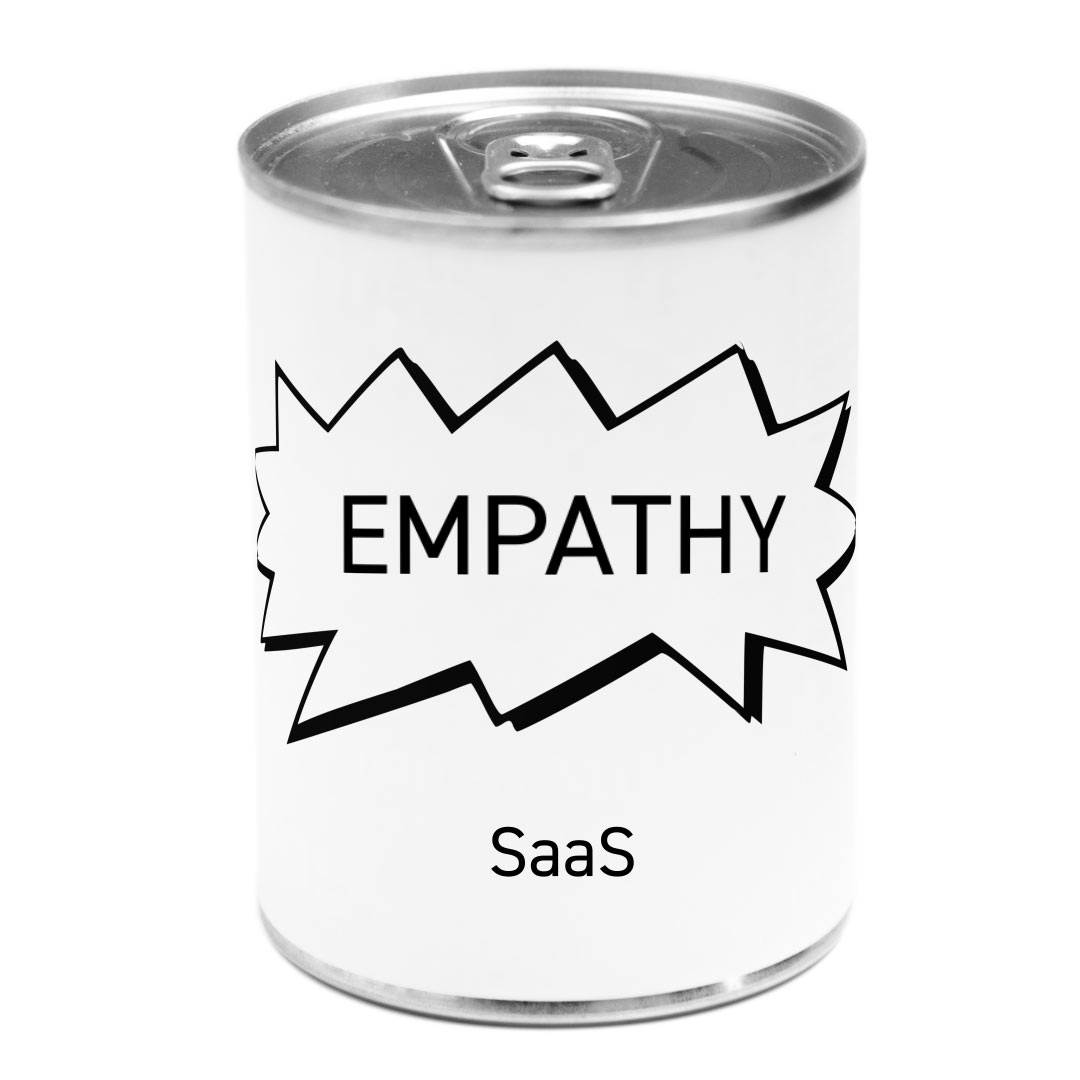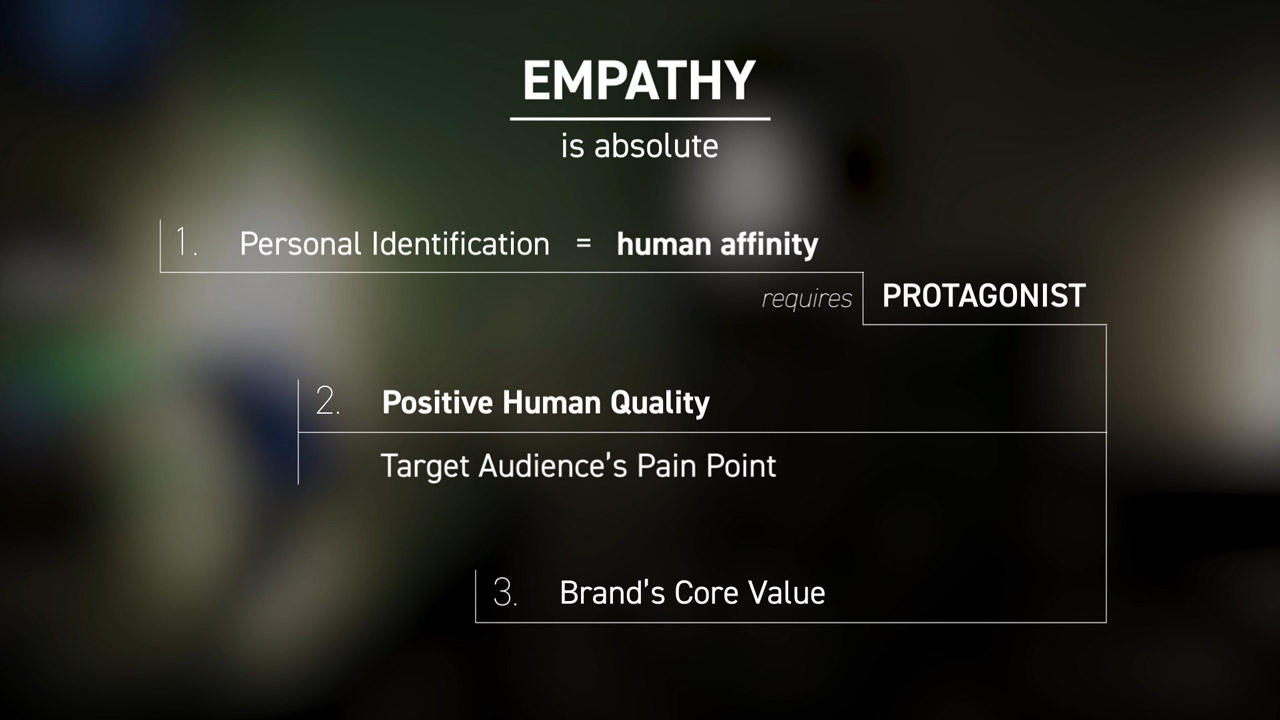This video was originally recorded on May 6th, 2018.
What Is Empathetic Marketing? How Do You “Market with Empathy” in a Practical Sense?
Empathy is one of the latest buzzwords, if not the buzzword, on the marketing frontier. And so the term “empathetic marketing” is born.
Just a cursory Google search turns up a few titles like:
- 8 Genius Examples of Empathetic Content Marketing in Action – HubSpot
- How Brands Are Using Empathy to Enhance Marketing – Econsultancy
- A Brand’s Guide to Empathy: Marketing’s Latest Buzzword – AdAge
- Empathy Is the Key to Great Marketing Campaigns – Forbes
- Show, Don’t Sell: How to Use Empathic Marketing to Win More Business in 2018 – Contently
A level-set for empathetic marketing.
A few weeks ago, Think with Google hosted a live video interview, “Using Empathy in Marketing: A Conversation with Mary Beech, CMO at Kate Spade.” Mary shared her insights and philosophy behind Kate Spade’s various successful campaigns, with respect to empathy in marketing.
Google and Mary were gracious enough to take my question during the live Q&A: “Mary, what do you believe is the future of empathetic marketing, especially with video?”
“Video is the future…but it takes understanding. It can’t just be the science, and the metrics, and the data. It’s taking the science and the metrics and the data and really converting them into customer understanding and human understanding.”
Mary Beech, “Using Empathy In Marketing”
Mary hits the nail on the head. At the heart of empathetic marketing is insightful, human understanding.
The previously mentioned articles do a fair job of describing empathy, but I feel like we’re still poking and prodding at the topic without a lot of takeaway. It’s as if we’ve all assumed a definition of empathy, and we just need a few pointers to perfect our technique.
But empathy is not a technique. To market with empathy, we have to understand it for what it really is. We need to get it right.
Defining Empathy. Really.
There are 3 components you must have to market with empathy. But first, our definitions.
Empathy is a personal identification between story and audience.
Empathy is not a tool.
It’s not a system or a strategy. There’s no metric for empathy you can plug in to your marketing dashboard.
That might sound silly, but it’s worth the caution: every other marketing trend is quickly canned, labeled, and sold by an endlessly diversifying MarTech and services industry. But empathy is not novel, and it is certainly not technological. Empathy is a category of connection between two persons; it lives in the mental-emotional gossamer of the human psyche. And, for that reason, it is not a means of manipulation to be trifled with. More on that later.

Not sold by your local grocer.
Empathy is not sympathy.
In his latest book Storynomics, Robert McKee says, “Sympathetic means likable – an amiable, companionate person the target audience might want as a friend, family, or neighbor.” In contrast, “Empathetic means ‘like me.’ An innate trait shared by both the core character and the target audience.”
He goes on to write, “Sympathy is optional; but Empathy is essential. Audience involvement hinges on an act of personal identification.”
Empathetic means far more than Engaging.
How many creative briefs have you read (or written) that call for the video/creative to be “engaging?” Are they not basically saying:
- “I want people to enjoy the video.”
- “I want viewers to watch it to completion, so they move to action.”
- “I don’t want a boring video. I want it to be ‘engaging.’”
Let “audience involvement” be your new goal, the term you use over “engaging.” That’s not to discredit the importance of retention rates, likes, and shares, but rather to underscore that those are metrics of technical engagement. That’s not the same thing as a personal engagement – an involved audience – who feels an emotional connection to your work, your story. Both are important to your marketing success, but they are distinctly different.
Empathy cannot be coerced.
So many well-intentioned campaigns strive for empathy – for engagement – but only find a tepid, passing likability among their target audience. Why?
The campaign’s story may have a great premise, a functional production budget, and a hungry audience, but it’s undercut by the trope of what I call the injured puppy. You know what this looks like. It’s every nerdy kid in the beginning of every forgettable young adult drama. We’re tuning in right as the character falls out of the bad luck tree and hits every miserable branch on the way down. You really only care as much as you pity them, so it barely works as sympathy, and it really fails as empathy because the world is just happening to them.

Please feel sorry for me.
There’s nothing the character does that makes you think, “Hey, they’re like me!”
And that’s the critical difference. Empathetic marketing requires an active character.
- A story that has no audience involvement is boring. It fails at sympathy and empathy.
- A story with a passing likability might invoke sympathy, but there is no empathy found with the target audience. It’s tolerable, but disposable.
- A story with true audience involvement creates a personal identification with the target audience. Empathy is found because of what the character does.
First Component: Personal Identification Requires a Protagonist
The Kate Spade brand has figured out that empathetic marketing requires a hero. Enter the Kate Spade woman – a multifaceted, many-faced character, who is an amalgamation of their customers.
Between the Kate Spade woman and the brand’s customers (and the brand’s people!), we find a mutual humanity – a personal identification.
“I think about the Kate Spade woman every morning, and I wish I could be more like her.”
Mary Beech, “Using Empathy In Marketing”
A mutual humanity endears the brand to the target audience.
In Storynomics, McKee defines for the modern marketer the binary nature of empathy – what he calls “The Empathy Imperative.”
As viewers, we are quick to judge. And judge we do! If we find a relatable thread, we’re in. If we don’t, we’re out. Why should I give your ad my attention, if I don’t think it’s for me, about me, or like me?
“If your target audience member does not sense a mutual humanity between herself and your story’s core character, she will not care, not listen, not identify, not be moved to act. Empathy is absolute.”
Robert McKee, Storynomics
To market with empathy, you need to develop a protagonist, who will share this mutual humanity with the target audience.
But do not rush headlong into storytelling with only a vague persona in mind. Without a clear protagonist, your stories will be superficial and uninspired. And McKee points out that the fall-back tendency in marketing is to compensate with casting…
“An everywoman protagonist is not a guarantee of customer-centricity. What the consumer wants is a human affinity, not a clichéd facsimile.”
Robert McKee, Storynomics
Buyer personas can become a regrettable crutch, if used to heavily influence casting. It can easily lead to clichés – or stereotyping. (This is why we create viewer profiles for our clients’ projects, in order to identify the target as an audience, not just a customer.)
We need to look deeper.
Second Component: Your Target Audience’s Pain Point – Translated
Creating a protagonist is not a day’s work. This will be a character, who is both authentic to your brand and identified by your target audience. But, thankfully, it’s exciting work. Here are a few steps you can follow to ignite your creativity while standing firmly on-brand.
Talk to your customers.
No, not an email survey. A real conversation. Human to human. Remember, empathy is not a tool, but it is your opportunity to infuse your marketing might with real customer interactions. So it comes as no surprise: to create a protagonist that is like your customers, you need to talk to your customers. For that purpose, one intentional chat with a loyal customer can far outweigh ten impersonal, short surveys with ratings from 1 to 10 and optional comment boxes.
- What are your customers’ wants? Needs?
- What do they lack? What do they fear?
- Do you know what they think or feel about your brand? About what you offer?
This might be harder for your business than others, especially if you’re smaller or an ecommerce business. But this is where you can kill two birds with one stone. How about set up a booth at an event, broadcast on social, dotcom, and email – weeks or months in advance – and talk to your loyal customers, who arrive at your booth? Find a way to involve your customers in this process. After all, you are creating a character like them. Take your time and get creative.
Interpret your data.
What does your data teach you about your customers’ behavior? Are your customers returning or churning? Are they seasonal or consistent? What search queries bring them to your website? What are they searching for on your site? What kind of messaging or content converts?
What conclusions can you make about your target audience(s)? What patterns of behavior stand out as indicative of your customers’ common motivations or decision-making factors?
List your conclusions with as much detail as you can. Then, check them against what your customers are actually telling you. Note where you find overlap.
Translate the pain point. Avoid creating injured puppies.
Once you gather all of this insight, it will illuminate your target audience’s pain point – that central facet that makes them a customer to begin with.
But you can’t just create a protagonist that shares the same pain as your audience and call it done. Yes, the protagonist needs to be “like your customer,” but never in the negative. That’s just an injured puppy.
You must translate their pain point into a positive human quality.
“An audience subconsciously identifies with [the] positive human quality emanating from within the character.”
Robert McKee, Storynomics
Make the protagonist active. Never passive.
For example, a customer’s pain point might be needing financial stability. A poor protagonist would be someone just like them, in the negative: worried, confused, and unsure about their finances. But a good protagonist could be one who works a second job to provide for his family or one who is generous with her money.
These two characters are viable protagonists for two reasons.
- They are doing something. He is working hard and sacrificing to strive for financial stability. She gives generously.
- They have a mutual humanity with the target audience – in the sensitive realm of personal finance.
Look at the Kate Spade brand as an example.
In her interview, Mary talks about partnering with YouTube to really understand a particular target audience.
Her team talked with real customers around the world, and they analyzed how this specific audience is searching, browsing, and consuming. Then, they interpreted their research to uncover this audience’s pain point.
“We learned that target audience of women cared about what is confidence, what is ambition, what does happiness look like.”
Mary Beech, “Using Empathy In Marketing”
In order for a character to be empathetic, they must do something that demonstrates their relatability to the core audience.
For the Kate Spade New York woman – the brand’s protagonist – it’s how she carries herself. The pain point was translated into a positive human quality that resonates with their target audience.
And resonate it did. The brand’s #missadventure campaign was a roaring success, a prime example of empathetic marketing.
“We really are setting up this person that is aspirational in that you wish you had it that much together, but we’re also that much comfortable with not having it together.”
Mary Beech, “Using Empathy In Marketing”
Third Component: Your Brand’s Core Value
“We have a core value of scrappy at Kate Spade…we definitely do things in a scrappy way, and we’re going out and talking with our customers in a real, authentic way.”
Mary Beech, “Using Empathy In Marketing”
Where your customer’s pain point and your brand’s core value intersect is the fertile ground for creating a good protagonist.
For Kate Spade, the positive human quality of “aspiration” intersects with the brand’s core value of “scrappy” to engender this down-to-earth, go-getter New York woman.
Don’t downplay or assume the core value.
If your brand’s core value (singular) hasn’t been forged, fired, and affixed in your company’s ethos, do not lose heart. While that is a full C-suite decision, use your insight from talking with your customers about your brand and offerings. Compare that to your brand’s voice and marketing strategy. It is critical that your target audience believes whatever core value you choose to espouse.
If the positive human quality is one side of the empathetic marketing coin, the brand’s core value is the other.
Without the positive human quality, your work might be on-brand, but you’ll miss the target audience.
Without the brand’s core value, you might tell great stories that connect with people, but you’ll confuse the target audience with mixed messaging.
For example, Dollar Shave Club could produce a series of short spots about ordinary people planning for a beautiful family vacation [mutual humanity]. They save their money, which would otherwise have been lost on expensive razor blades [active protagonist]. This creates a personal identification with a consumer audience that prefers experiences over products [pain point translated]. But if the protagonist has none of the “it’s okay to be cheap” characteristic the brand is known for, it would lead to confusion, not identification. The brand has matured since its acquisition by Unilever, but it hasn’t departed from the low-pricing core value that shook its industry.
Your brand’s core value is what ensures that your target audience’s personal identification is ultimately with your brand.
Summary
Empathy is found when there is a personal identification between story and audience.
Empathetic marketing is also your opportunity to do far more good than typical interrupt advertising and content marketing, not to mention be competitive and profitable in a post-advertisement world.
“The positive human quality in your marketing’s protagonist is what becomes the story’s center of good.”
Robert McKee, Storynomics
You can even argue that empathetic marketing is a non-negotiable today, especially if your target audience is America’s loneliest generation. That’s one heck of a pain point.
But you need to be careful. Pain points are so named for a reason. You can make it better, or you can make it worse. And if you’re not careful in your marketing, you’ll miss the mark. At best, your work will come across as heavy-handed and disposable, or, at worst, crass and manipulative. And that’s not good.
Audiences install ad block for a reason. They don’t want to see ads on the best of days. So if you serve up a tone-deaf story that exploits your audience’s humanity, only to then prove you don’t understand what they care about to begin with…well, remember Pepsi’s infamous peace-making ad with Kendall Jenner?
Recap: How to Use Empathy in Marketing
- First, start sketching a character, as best as you can, who bears a mutual humanity with your target audience. You don’t need to get right. You just have to start.
- Do your homework. Talk to your customers. Study your data. Identify your target audience’s pain point. Translate it into a positive human quality, and imbue your protagonist with that quality.
- Then, find the intersection of their pain point and your brand’s core value. Let your imagination run wild. What kind of characters come to mind? They must be like your target audience and embody what your brand stands for.
- Finally, whether it’s someone just like your customer, or a product, or even your company, you crystallize the protagonist.
Now you just have to tell the right stories.
Do You Have a Video Production Partner for Your Brand?
We’re living in a new era. It’s not enough for brands to have video content. Customers demand stories.
Therefore, brands have to be storytellers.
Flying Canvas is more than a video production company. We’re story-makers. We’re the partner for digital brands and agencies, who want to rise to the modern customer’s demands.
Take a look at the stories we make for brands big and small. Reach out to see if we’re a fit.




